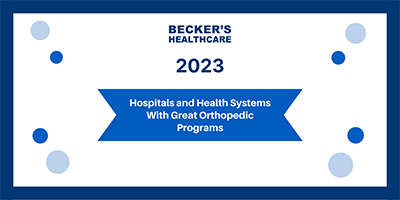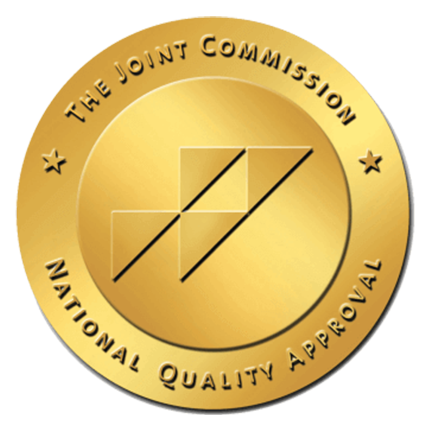Orthopedic Care
at Trinitas Regional Medical Center
If you sustain an injury or suffer from another medical concern that affects your bones and joints, you already know how disruptive your condition can be to the rest of your life. We rely on our healthy bones and joints to stay active, mobile, resilient and independent.
Trinitas Regional Medical Center offers leading-edge treatments and procedures aimed at restoring your mobility and quality of life. Our facilities, located in Elizabeth, New Jersey, have everything you need to achieve the best possible orthopedic outcomes.
If you need a total joint replacement, we will educate and prepare you every step of the way, giving you the finest, most compassionate care during your hospital stay and providing you with a postoperative outpatient rehabilitation program that will have you getting back to what you want to do.
To learn more about what our orthopedists and orthopedic surgeons can do for you, request an appointment today.
We Understand Our Patients’ Needs
Orthopedics is a broad branch of medicine that can address everything from simple broken bones to serious diseases of the musculoskeletal system. Whether you have received emergency care for an accident or are suffering from a degenerative condition, our dedicated, caring professionals are ready to assess your needs and provide the latest, state-of-the-art treatment options, using minimally invasive techniques whenever possible.
Award-Winning and Accredited Orthopedic Care
As an award-winning hospital system, RWJBarnabas Health has received numerous accreditations and recognitions from state and national organizations. In 2023, we were recognized by Becker’s Hospital Review as one of “100 Hospitals and Health Systems with Great Orthopedic Programs." Trinitas Regional Medical Center has also earned many other awards and accreditations for excellence in patient care.


Programs and Specialties We Offer
Orthopedic doctors at Trinitas Regional Medical Center use the most up-to-date, leading-edge procedures and treatments available. Our programs and specialties, which include diagnosis, treatment, and rehabilitation include:
- Joint Commission-certified Total Hip Replacement Program
- Joint Commission-certified Total Knee Replacement Program
- Full-service orthopedic rehabilitation
Nonsurgical Orthopedic Treatments
In many cases, pain relief and recovery can be achieved with nonsurgical treatments such as physical therapy. Some of the nonsurgical treatments offered at our facilities throughout New Jersey include:
- Orthopedic rehabilitation
- Osteoporosis treatment
- Pain management including trigger point injections
- Spinal treatments (physical and occupational therapy, injections, pain medication)
Orthopedic Surgery
Some of the orthopedic procedures our facilities can provide include:
- Achilles tendon repair
- ACL tear treatment
- Arthroscopy (shoulder, elbow, wrist, hip, knee, ankle)
- Carpal tunnel release
- Elbow surgery
- Foot and ankle surgery
- Fracture fixation
- Hip resurfacing
- Joint replacements and partial joint replacements (hip, ankle, knee, elbow)
- Joint revision surgery (hip, knee, shoulder)
- Ligament reconstruction
- Shoulder replacement surgery
- Spine surgery
- Tendon repair (bicep/tricep)
- Tennis elbow release
Surgical and Postoperative Advancements
The national average for total joint replacement patients stay in the hospital is fewer than 4 days, depending on the type of surgery, age of the patient and personal history. Here at Trinitas, we strive for a one-day stay with excellent results. After the surgery, we aim to have both total hip and total knee replacement patients up and walking immediately with most starting the afternoon of their surgery. Physical and occupational therapists provide assistance with the skills and encouragement necessary to achieve early movement and increasing walking ability and the patient's ability to take care of themselves.
Let's be healthy together. Request an appointment.

